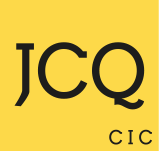The full benefits of the A2C data standards will be realised by MIS suppliers and awarding organisations by being incorporated into the design and implementation of their updated systems. Such benefits will bring quality, consistency and ease of use to examinations officers (EOs). Some of these benefits are detailed below:
- All Awarding Organisation applications and updated management information systems are being written to ISB/A2C standards, and the long term aim is that they will all have a similar look and feel. The A2C data standards will ensure greater consistency in process and for example in the use of harmonised lists. MIS suppliers also have an opportunity to standardise terminology and naming conventions in their interface, although most suppliers are expected to introduce these changes gradually over time.
- Awarding Organisations will make product catalogue data available via A2C interfaces once a centre’s MIS is A2C compliant. This will include both general and vocational qualifications offered across all participating awarding organisations. Centres should, for example, be able to compare all available offerings for GCSE English, or be able to find providers of the less common products. Some FAB Awarding Organisations, including NCFE, plan to become A2C compliant and when this happens their product catalogues will also become available from within your centre’s MIS.
- Awarding Organisations will provide messages which can be used to keep data held on centre MIS systems aligned with Awarding Organisation records. These messages will provide detail for transactions which have taken place outside A2C e.g. using Awarding Organisation extranet services. This information will provide guidance on the updates to MIS data which are required in order to maintain alignment with Awarding Organisation records. MIS suppliers will present this information to centres so that they can make manual changes if necessary.
- Results outcome data will be harmonised and significantly enriched to include contributing outcomes, certification detail where appropriate, data previously issued via secure extranets and updates to the product catalogue to support centre staff (raw mark grade boundaries).
- When an A2C order (entry) is submitted, your upgraded MIS will be able to provide immediate feedback based on the validation rules within the relevant product catalogue. This validation will cover issues like provision of the appropriate learner identifiers; requirements like these will be defined by individual Awarding Organisations for individual products, but the validation process will operate consistently for all. This function will be consistent regardless of which Awarding Organisation is satisfying the order.
- The event schedule will provide details such as system deadlines and early bird discounts allowing EOs to obtain best value for money options.


